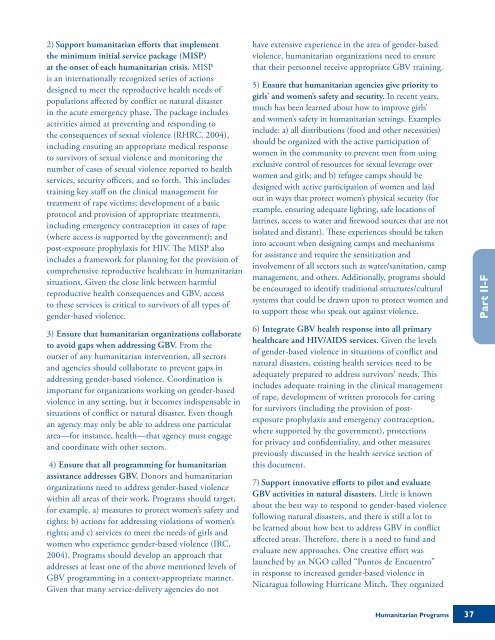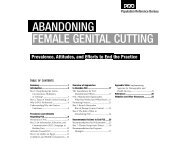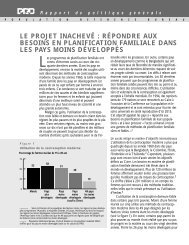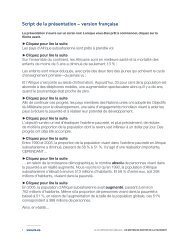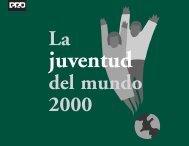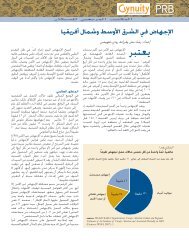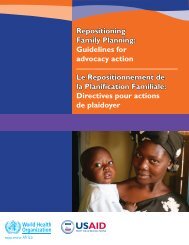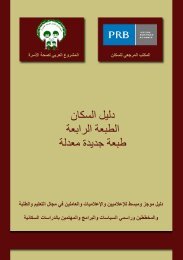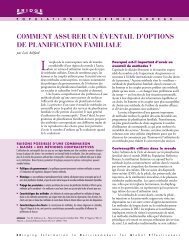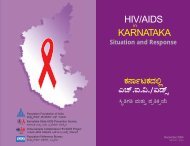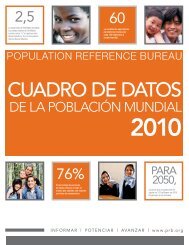addressing gender-based violence through usaid's health ... - IGWG
addressing gender-based violence through usaid's health ... - IGWG
addressing gender-based violence through usaid's health ... - IGWG
You also want an ePaper? Increase the reach of your titles
YUMPU automatically turns print PDFs into web optimized ePapers that Google loves.
2) Support humanitarian efforts that implement<br />
the minimum initial service package (MISP)<br />
at the onset of each humanitarian crisis. MISP<br />
is an internationally recognized series of actions<br />
designed to meet the reproductive <strong>health</strong> needs of<br />
populations affected by conflict or natural disaster<br />
in the acute emergency phase. The package includes<br />
activities aimed at preventing and responding to<br />
the consequences of sexual <strong>violence</strong> (RHRC, 2004),<br />
including ensuring an appropriate medical response<br />
to survivors of sexual <strong>violence</strong> and monitoring the<br />
number of cases of sexual <strong>violence</strong> reported to <strong>health</strong><br />
services, security officers, and so forth. This includes<br />
training key staff on the clinical management for<br />
treatment of rape victims; development of a basic<br />
protocol and provision of appropriate treatments,<br />
including emergency contraception in cases of rape<br />
(where access is supported by the government); and<br />
post-exposure prophylaxis for HIV. The MISP also<br />
includes a framework for planning for the provision of<br />
comprehensive reproductive <strong>health</strong>care in humanitarian<br />
situations. Given the close link between harmful<br />
reproductive <strong>health</strong> consequences and GBV, access<br />
to these services is critical to survivors of all types of<br />
<strong>gender</strong>-<strong>based</strong> <strong>violence</strong>.<br />
3) Ensure that humanitarian organizations collaborate<br />
to avoid gaps when <strong>addressing</strong> GBV. From the<br />
outset of any humanitarian intervention, all sectors<br />
and agencies should collaborate to prevent gaps in<br />
<strong>addressing</strong> <strong>gender</strong>-<strong>based</strong> <strong>violence</strong>. Coordination is<br />
important for organizations working on <strong>gender</strong>-<strong>based</strong><br />
<strong>violence</strong> in any setting, but it becomes indispensable in<br />
situations of conflict or natural disaster. Even though<br />
an agency may only be able to address one particular<br />
area—for instance, <strong>health</strong>—that agency must engage<br />
and coordinate with other sectors.<br />
4) Ensure that all programming for humanitarian<br />
assistance addresses GBV. Donors and humanitarian<br />
organizations need to address <strong>gender</strong>-<strong>based</strong> <strong>violence</strong><br />
within all areas of their work. Programs should target,<br />
for example, a) measures to protect women’s safety and<br />
rights; b) actions for <strong>addressing</strong> violations of women’s<br />
rights; and c) services to meet the needs of girls and<br />
women who experience <strong>gender</strong>-<strong>based</strong> <strong>violence</strong> (IRC,<br />
2004). Programs should develop an approach that<br />
addresses at least one of the above mentioned levels of<br />
GBV programming in a context-appropriate manner.<br />
Given that many service-delivery agencies do not<br />
have extensive experience in the area of <strong>gender</strong>-<strong>based</strong><br />
<strong>violence</strong>, humanitarian organizations need to ensure<br />
that their personnel receive appropriate GBV training.<br />
5) Ensure that humanitarian agencies give priority to<br />
girls’ and women’s safety and security. In recent years,<br />
much has been learned about how to improve girls’<br />
and women’s safety in humanitarian settings. Examples<br />
include: a) all distributions (food and other necessities)<br />
should be organized with the active participation of<br />
women in the community to prevent men from using<br />
exclusive control of resources for sexual leverage over<br />
women and girls; and b) refugee camps should be<br />
designed with active participation of women and laid<br />
out in ways that protect women’s physical security (for<br />
example, ensuring adequate lighting, safe locations of<br />
latrines, access to water and firewood sources that are not<br />
isolated and distant). These experiences should be taken<br />
into account when designing camps and mechanisms<br />
for assistance and require the sensitization and<br />
involvement of all sectors such as water/sanitation, camp<br />
management, and others. Additionally, programs should<br />
be encouraged to identify traditional structures/cultural<br />
systems that could be drawn upon to protect women and<br />
to support those who speak out against <strong>violence</strong>.<br />
6) Integrate GBV <strong>health</strong> response into all primary<br />
<strong>health</strong>care and HIV/AIDS services. Given the levels<br />
of <strong>gender</strong>-<strong>based</strong> <strong>violence</strong> in situations of conflict and<br />
natural disasters, existing <strong>health</strong> services need to be<br />
adequately prepared to address survivors’ needs. This<br />
includes adequate training in the clinical management<br />
of rape, development of written protocols for caring<br />
for survivors (including the provision of postexposure<br />
prophylaxis and emergency contraception,<br />
where supported by the government), protections<br />
for privacy and confidentiality, and other measures<br />
previously discussed in the <strong>health</strong> service section of<br />
this document.<br />
7) Support innovative efforts to pilot and evaluate<br />
GBV activities in natural disasters. Little is known<br />
about the best way to respond to <strong>gender</strong>-<strong>based</strong> <strong>violence</strong><br />
following natural disasters, and there is still a lot to<br />
be learned about how best to address GBV in conflict<br />
affected areas. Therefore, there is a need to fund and<br />
evaluate new approaches. One creative effort was<br />
launched by an NGO called “Puntos de Encuentro”<br />
in response to increased <strong>gender</strong>-<strong>based</strong> <strong>violence</strong> in<br />
Nicaragua following Hurricane Mitch. They organized<br />
Part II-F<br />
Humanitarian Programs<br />
37


